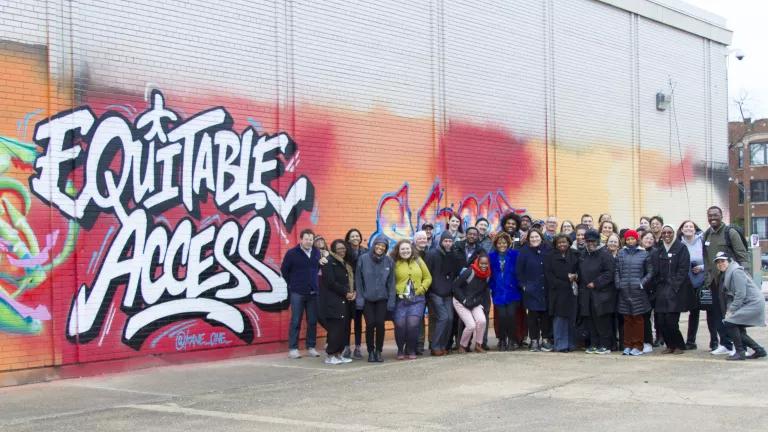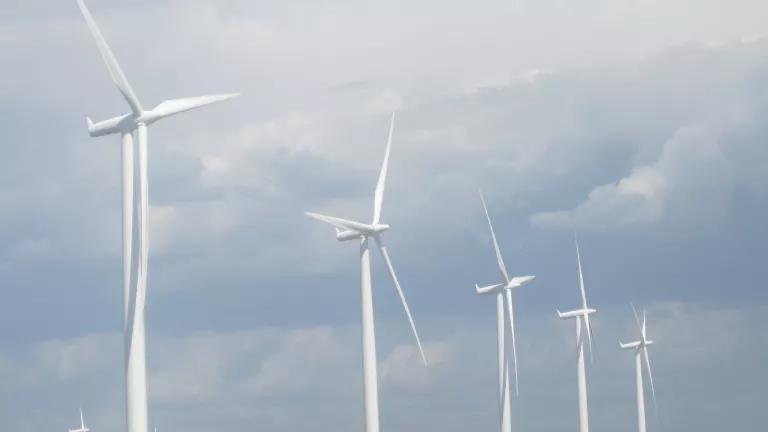Diablo Canyon Update One Year After Historic Joint Proposal

A year has passed since the release of the historic and widely supported Joint Proposal to retire and replace California’s last remaining nuclear plant, Diablo Canyon, with lower-cost zero-carbon resources within nine years. While there have been several procedural developments, the plan is on track. Following two agreements that increased support for local communities and decreased costs to customers, stakeholders submitted their reply briefs to the California Public Utilities Commission last week. A final decision is expected this fall.
Although the June 21, 2016, historic Joint Proposal to retire and replace the Pacific Gas & Electric (PG&E) plant, located near San Luis Obispo, led some to contend that California’s use of polluting natural gas would inevitably surge as a result of the retirement of the two reactors, the groundbreaking replacement plan remains committed to filling the gap with clean energy technologies.
NRDC and the plant's owner, the Pacific Gas & Electric Company, are joined by consumer advocates in agreement that running Diablo Canyon Nuclear Power Plant after 2025 would cost more than replacing it with cleaner, zero-carbon resources, led by energy efficiency and renewable energy like wind and solar.
Once Diablo Canyon is retired, NRDC estimates that Californians will save at least $1 billion compared to the high cost of refurbishing an aging nuclear plant, which was initially designed a half century ago, and relicensing it to operate through 2044. In addition to lower overall electricity demand, the costs of renewable power are decreasing. At the same time, running a huge inflexible nuclear plant designed to operate around-the-clock is a roadblock to replacing polluting power plants with emissions-free renewable energy that ramps up and down. For example, California at times today throws away solar energy at midday because it exceeds customers’ electricity needs and storage capacity is insufficient.
Diablo Canyon accounts for about 9 percent of California’s in-state power generation, 6 percent of the state’s total electricity mix, and about 20 percent of the electricity in the service territory of PG&E – one of the nation’s largest combination natural gas and electric utilities, serving 16 million people in northern and central California.
Here’s a progress report since the announcement of a proposal to retire the plant:
Within days of the release of the Joint Proposal, the California State Lands Commission approved an extension of the plant’s operating leases from 2018 through 2025. Although this decision was widely supported as a way to ensure orderly retirement of the plant, one party (called the World Business Academy) filed suit to block the extension, and NRDC and its Joint Proposal partners are supporting the Lands Commission in court.
In August 2016, PG&E, NRDC and the other Joint Proposal parties formally launched proceedings at the California Public Utilities Commission (CPUC), to open public review of the proposal and request CPUC approval of its key elements. Those proceedings are moving toward a conclusion with the filing of final reply briefs, and a CPUC ruling on the plan to close the plant is expected within months.
During the CPUC proceedings, NRDC and the other Joint Proposal partners agreed to some modifications of the initial proposal, none of which affect our commitment to fully replace Diablo Canyon’s electricity with energy efficiency, renewable resources like wind and solar, demand response (compensating customers for altering their energy use at specific times), and energy storage. Key modifications include:
- $25.5 million in additional funding was added for communities adversely affected by the closure, expanding the geographic scope of relief beyond the plant’s immediate vicinity;
- PG&E’s request for recovery of costs previously incurred to maintain and extend plant operations was reduced by $34.1 million; and
- A proposal to shift the venue for consideration of some of the proposed resource procurement to replace the plant into a broader, ongoing CPUC proceeding on integrated resource planning, which will combine decisions on replacement procurement with other actions needed to meet the new statewide target of 40 percent reductions in greenhouse gas emissions by 2030 (established by SB 32, enacted after the release of the Joint Proposal).
Now that parties have submitted their reply briefs, the Administrative Law Judge assigned to the case will consider the evidence and prepare a draft decision for review, possible modification, and eventual approval by the full Commission. A Final Decision by the Commission will likely be adopted sometime in the fall. After that, PG&E, the plant workers, and the local communities will begin the long process of preparing for retirement and decomissioning while clean energy companies and system planners develop the zero carbon resources that will provide continued reliable electricity into the future.
NRDC continues to see the Joint Proposal as an inspiring model for retiring and replacing aging nuclear plants with lower-cost clean energy resources, while ensuring fair treatment for the workers and communities involved.


